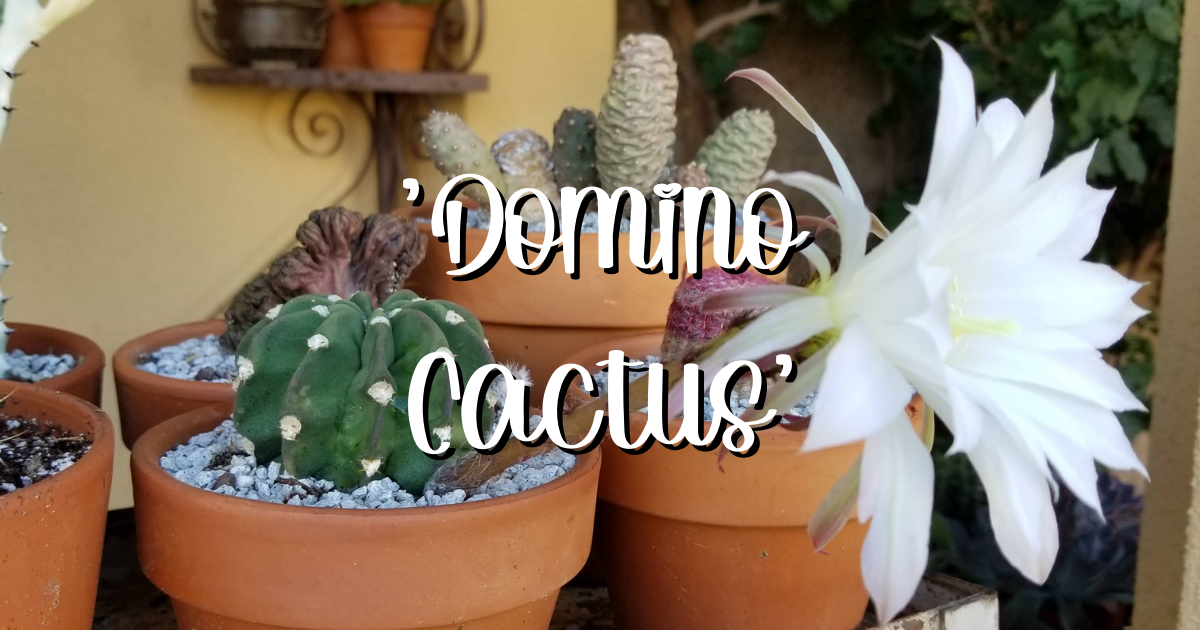‘Domino Cactus’, or Echinopsis subdenudata, is a stunning cactus species that can grow up to 6 inches tall and 8 inches wide. It has green stems covered with small white dots, giving it a “domino” appearance. The plant produces large, showy flowers in a range of colors, including white, pink, red, orange, and yellow. The flowers bloom in the summer and last for only a day or two, but the plant can produce multiple blooms throughout the season. The Echinopsis subdenudata ‘Domino Cactus’ has a columnar growth habit, with a central stem that produces offsets or “pups” around the base.
Dig in!
Fair Warning: I’m a total paparazzi when I catch any of my cacti blooming. Their flowers don’t last very long, but they’re by far the most beautiful flowers of any plant ever in the history of ever.
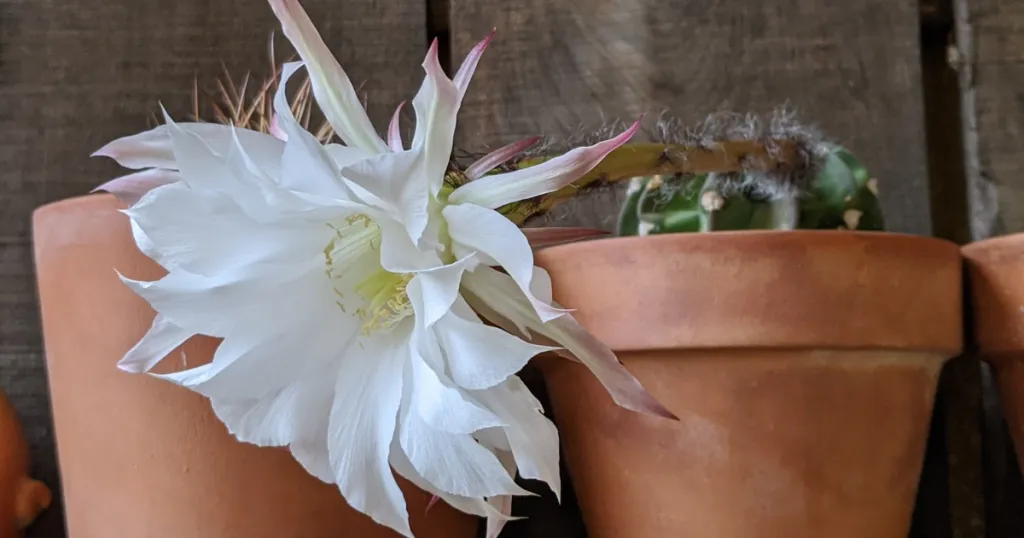
You might also like: Repotting Succulents: The Best Time to Repot Your Plants and 3 Ways to Tell When It’s Time
Native Habitat
Echinopsis subdenudata ‘Domino Cactus’ is native to Argentina and Bolivia, where it grows at altitudes of 600-1,800 meters. It thrives in a dry, desert-like environment with well-draining soil.
You might also like: Native Habitats of Succulents: Explore the Incredibly Diverse Environments
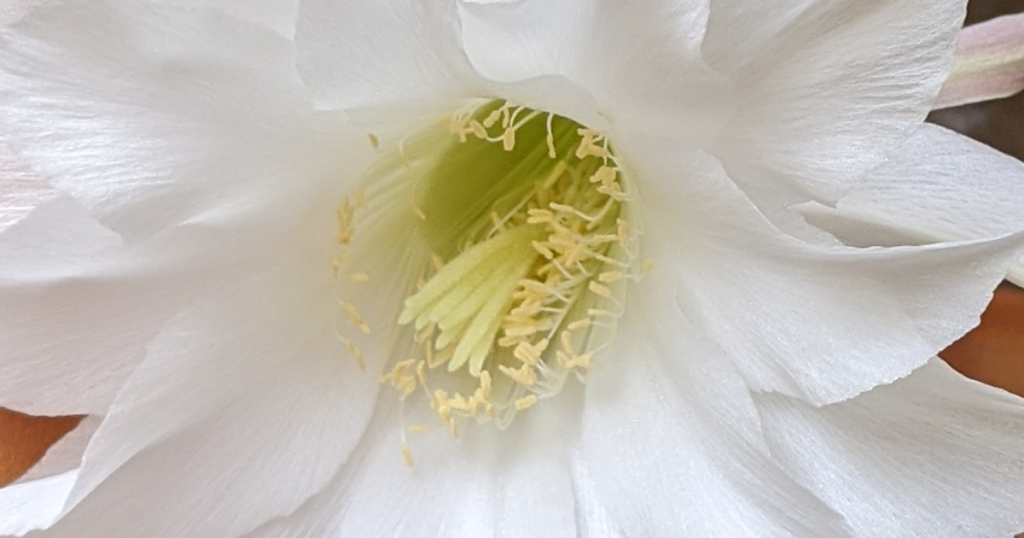
How to Water Echinopsis subdenudata ‘Domino Cactus’
Echinopsis subdenudata ‘Domino Cactus’ is a drought-tolerant plant and should be watered sparingly. Allow the soil to dry out completely between waterings, and then water thoroughly. During the winter months, when the plant is dormant, water even less frequently.
You might also like: How & When to Water Succulents So They Don’t Die
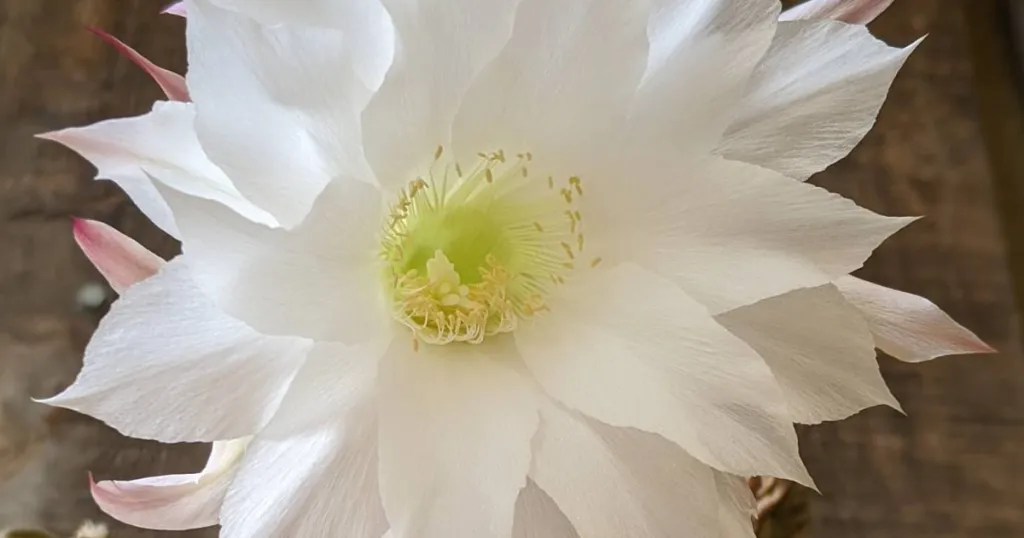
Soil
Echinopsis subdenudata ‘Domino Cactus’ requires well-draining soil to prevent root rot. A mix of cactus soil and perlite, pumice, coarse sand, and Turface is ideal. The soil should be slightly acidic, with a pH between 5.5 and 6.5. My Echinopsis subdenudata ‘Domino Cactus’ is in a mix of mostly pumice and a little bit of potting soil.
You might also like: Succulent Soil: Ultimate Guide & 4 DIY Recipes to Keep Your Succulents Happy and Healthy
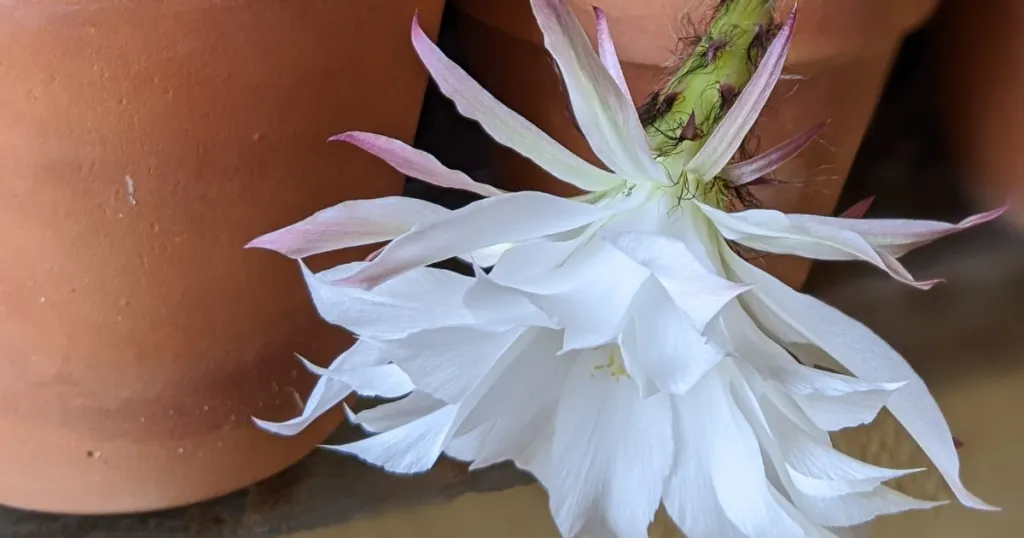
How to Propagate Echinopsis subdenudata ‘Domino Cactus’
Echinopsis subdenudata ‘Domino Cactus’ can be propagated by seeds or offsets. To propagate with offsets, wait until the pups are about 1/3 the size of the parent plant and then remove them with a clean, sharp knife. Allow the cuttings to dry for a few days, and then plant them in a well-draining cactus mix. Water sparingly until the cuttings take root. I think I might pot mine up soon so that it has room to grow pups.
You might also like: Propagating Succulents 4 Ways: The Best Guide Ever
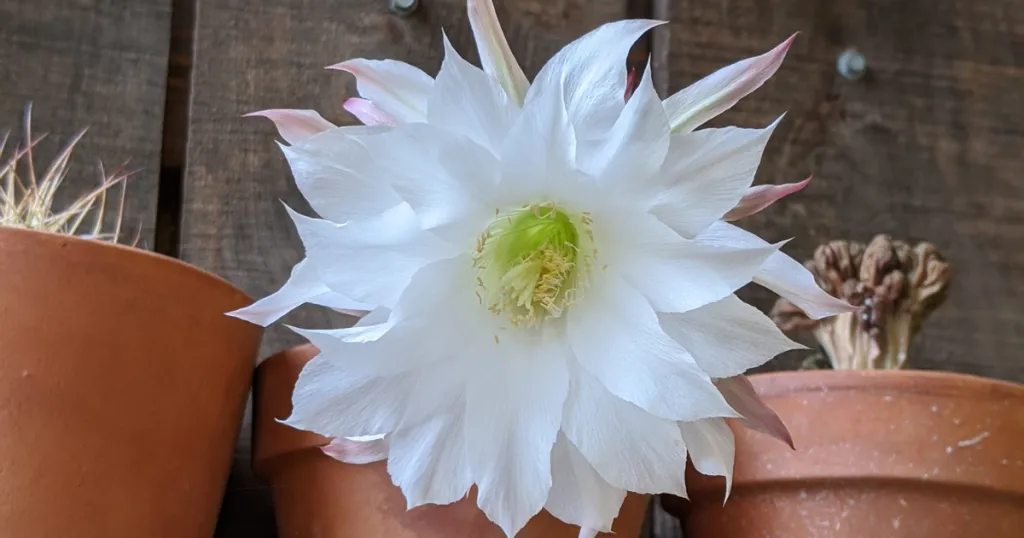
Echinopsis subdenudata ‘Domino Cactus’ Light Needs
Echinopsis subdenudata ‘Domino Cactus’ requires a careful balance of bright light and protection from intense sun exposure. This eye-catching cactus thrives on ample light to support healthy growth and encourage its colorful, variegated appearance. However, its direct exposure to strong, unfiltered sunlight, especially in hot weather, can lead to sunburn. For optimal health and appearance, provide Echinopsis subdenudata ‘Domino Cactus’ with ample bright, indirect light throughout the year.
During the growing season in spring and summer when sunlight is strongest, provide some protection from the intense midday sun. A sheer curtain or shade cloth can help filter the sunlight. In especially arid and hot climates, afternoon shade is recommended in summer. If Echinopsis subdenudata ‘Domino Cactus’ is grown indoors near a window, choose one that does not receive prolonged, direct sun exposure. A spot with some sun exposure in the morning or late afternoon is ideal.
If natural light is limited, use a grow light to provide 12-14 hours of supplemental light per day. Choose a grow light suitable for succulents and cacti and, to start, place it several feet above the plant to avoid burn. Monitor your Echinopsis subdenudata ‘Domino Cactus’ for signs of adequate lighting such as compact growth, bright coloring, and flowering if mature. Then, adjust the placement of the grow light if needed. Too little light will cause the cactus to grow elongated and pale. With the right balance of bright light and sun protection, your Echinopsis subdenudata ‘Domino Cactus’ will thrive and display its dramatic, eye-catching hues.
You might also like: How Much Light Do Succulents Need? A Comprehensive Guide in 12 Parts
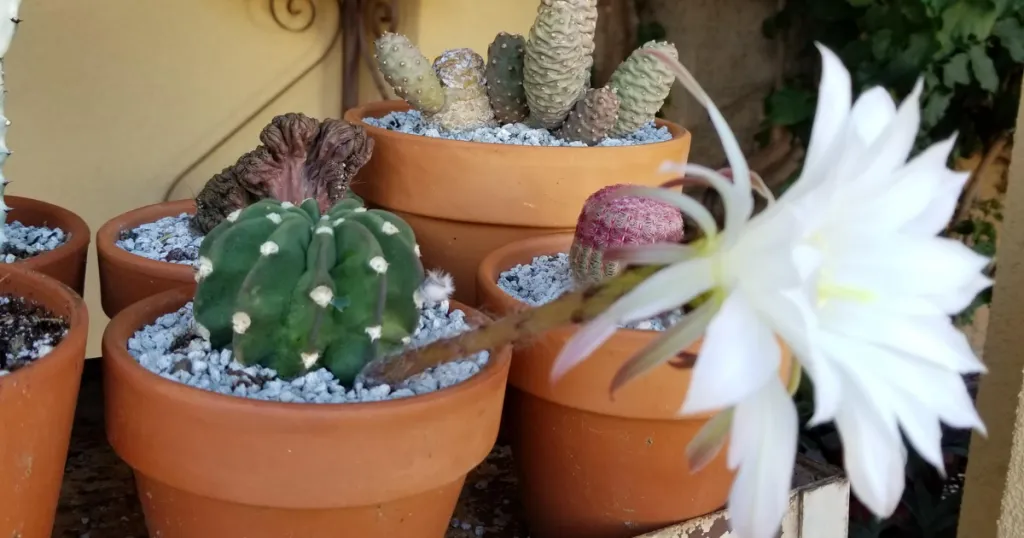
Fertilizer
Echinopsis subdenudata ‘Domino Cactus’ does not require much fertilizer. During the growing season, fertilize once a month with a balanced, water-soluble fertilizer diluted to about half-strength. Look for NPK numbers that are about the same like, 10-10-10.
You might also like: Succulent Fertilizer: The Ultimate Guide to Healthy Succulents + 8 DIY Fertilizer Recipes
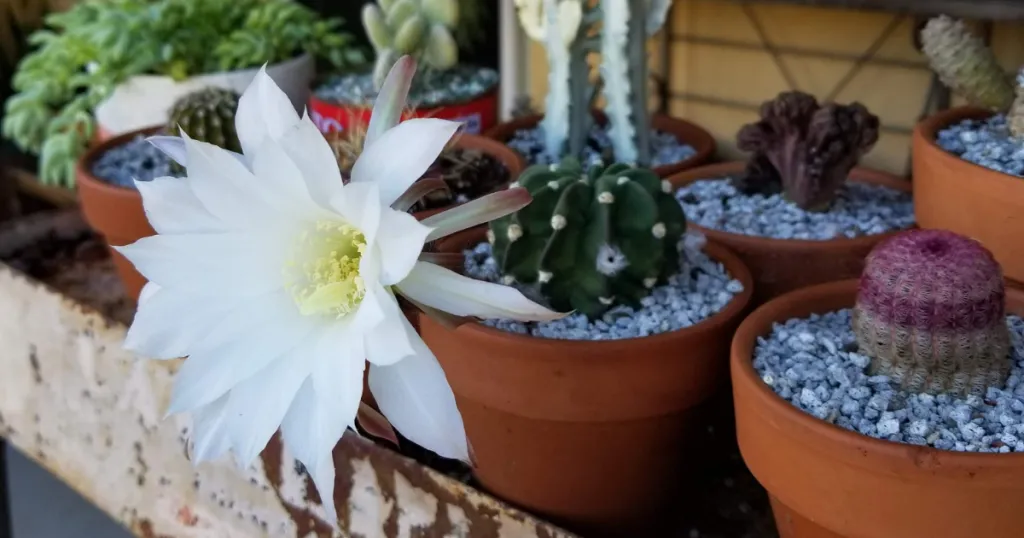
Echinopsis subdenudata ‘Domino Cactus’ Common Problems & Solutions
One common problem with the Echinopsis subdenudata ‘Domino Cactus’ is yellowing. This can be caused by overwatering or poor soil drainage. To remedy the issue, allow the soil to dry out completely between waterings and improve soil drainage by adding extra perlite or pumice to the mix. I planted mine in probably 80% pumice and 20% potting soil. It’s been a while, but my cactus is happy so I’m not going to touch it. Another common problem is bud drop, which can occur when the plant is exposed to sudden changes in temperature or light. To prevent bud drop, avoid moving the plant once buds have formed.
You might also like: 12 Succulent Pests and Diseases: Identification, Treatment, and Easy Prevention of Mealybugs, Thrips and More
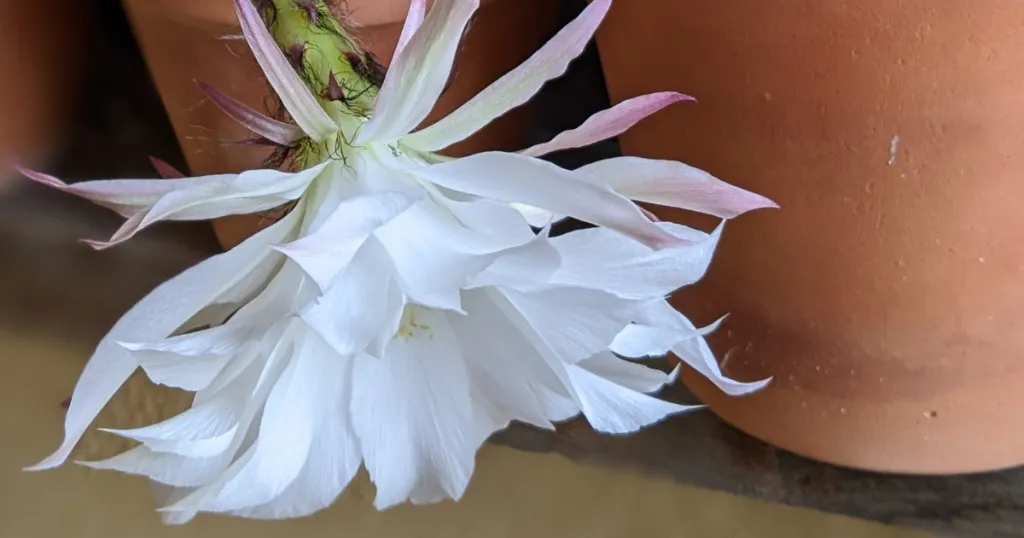
Hardiness Zone & Temperature
Echinopsis subdenudata ‘Domino Cactus’ is hardy in USDA zones 9-11 and can tolerate temperatures as low as 20°F (-6°C). In colder climates, it is best to grow the plant in a container and bring it indoors for the winter.
You might also like: Succulent Care by Zones
What is this furry black growth on my ‘Domino Cactus’?
That furry black growth is the start of a beautiful bloom about to happen! Keep an eye on your cactus and get your camera ready for the show!
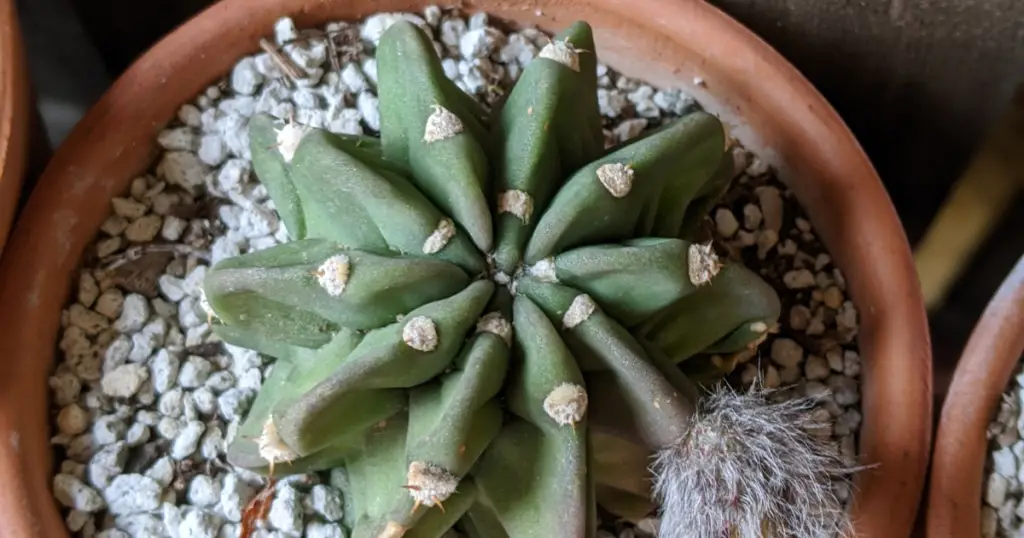
Additional Facts
Echinopsis subdenudata ‘Domino Cactus’ is also known as the Easter Lily Cactus or Hedgehog Cactus. It is a popular cactus species among collectors and is relatively easy to care for. With proper care, it can bloom multiple times a year, producing large and showy white flowers.
You might also like: Caring for Succulents While on Vacation (Hopefully to an Amazing Place) 2023
The fruit of the Echinopsis subdenudata ‘Domino Cactus’ is edible and is sometimes used in traditional South American cuisine. The fruit is small and red, with a sweet flavor and a slightly crunchy texture. However, the fruit should only be consumed in moderation, as it contains small amounts of toxic alkaloids.
You might also like: Drainage Hole at the Bottom of The Pot: Do Succulents Need Them? The Answer Might Completely Shock You!
Some cultivars of Echinopsis subdenudata ‘Domino Cactus’ may have variegated or striped foliage, which can add visual interest to your collection. These unique specimens may be harder to find and more expensive, but they can be a great addition to any succulent garden.
You might also like: Sunburnt Succulents

Where to Buy Succulents Online

